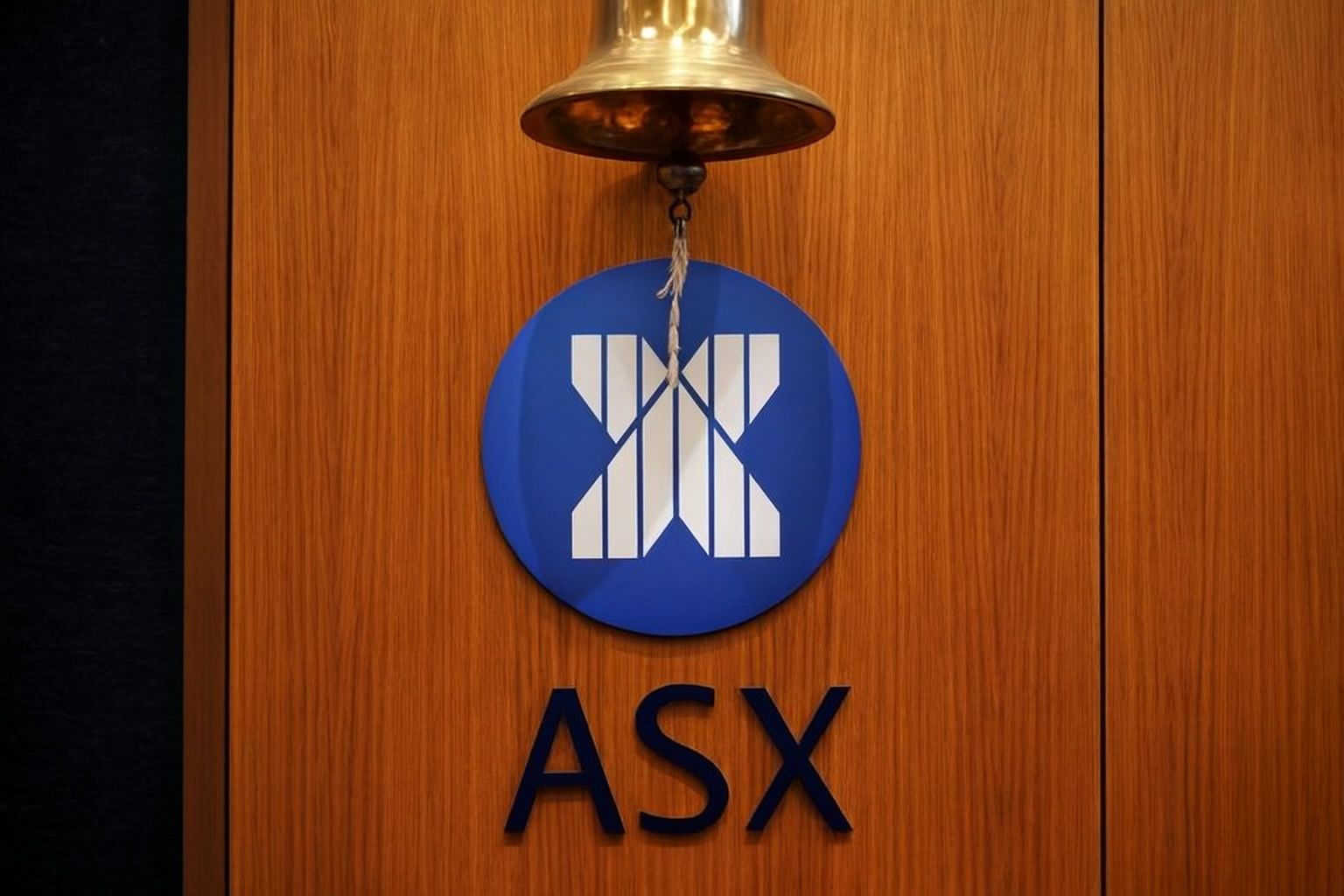Australian investors head into Thursday’s open with the S&P/ASX 200 sitting near a five‑month low, fresh wage data in hand, and global markets fixated on Nvidia’s blockbuster earnings and delayed US jobs figures. Here’s a detailed look at what’s setting the tone for the Australia stock market on Thursday, 20 November 2025.
1. How the ASX 200 traded on Wednesday, 19 November
The local market finished Wednesday on the back foot, extending the recent pullback.
- The S&P/ASX 200 closed around 8,448, down 0.25% on the day, while the All Ordinaries slipped about 0.2% to 8,721. [1]
- Seven of the eleven major sectors fell. Financials led the declines (down roughly 1.2%), with the big banks and insurers under pressure, while Information Technology also continued to weaken. [2]
- Offsetting some of the damage, energy, materials, gold miners and A‑REITs posted gains, echoing firmer commodity prices and a mild bid for defensives. [3]
On the stock level:
- DroneShield (DRO) was among the worst performers after news that its US CEO, Matt McCrann, resigned with immediate effect, sending the share price sharply lower amid heavy volume. [4]
- Webjet (WJL) surged more than 16% after confirming a non‑binding $353 million takeover proposal from Helloworld Travel at $0.90 per share, with Webjet’s board granting due diligence. [5]
- Lynas Rare Earths (LYC) jumped around 5–6% after an analyst upgrade to “buy”, reinforcing investor optimism toward rare‑earth demand. [6]
The overall picture: the benchmark is still digesting earlier losses, with resources and gold acting as a partial hedge against weakness in banks and tech.
2. Futures signal a modestly stronger ASX open
Overnight moves in SPI futures suggest the ASX 200 is poised to open slightly higher on Thursday, retracing part of Wednesday’s fall. [7]
- S&P/ASX 200 futures have been trading not far above recent lows, reflecting a market that is oversold but not yet in full risk‑on mode. Indicators show the futures index has retreated about 6% from its recent peak, hinting that some bargain‑hunting could emerge if global risk sentiment stabilises. [8]
- The Australian Financial Review notes that Australian shares are “set to advance at the open”, tracking modest overnight gains on Wall Street while traders wait for Nvidia’s results and the release of delayed US jobs data. [9]
Bottom line: the futures market is pointing to a cautious rebound when the Australia stock market bell rings, rather than a decisive trend change.
3. Wall Street and global markets: Nvidia and US data in focus
The key international backdrop for the ASX open comes from the US, where sentiment improved overnight:
- All three major US indices finished in the green: the Dow Jones added about 0.1%, the S&P 500 rose roughly 0.7%, and the Nasdaq gained about 1.2%, as investors positioned for Nvidia’s quarterly earnings and a backlog of US economic data following the prolonged government shutdown. [10]
- Nvidia reports after the US close (Thursday morning AEDT), with analysts expecting another huge jump in revenue and profits from AI‑related demand. Markets view Nvidia as the bellwether for the AI trade that has driven much of the global equity rally this year. [11]
- US 10‑year Treasury yields edged higher to around 4.13%, while the US dollar firmed against most major peers, reflecting expectations that the Federal Reserve will remain cautious despite prior rate cuts. [12]
- Oil prices fell again, with US crude around the high‑$50s per barrel and Brent near the mid‑$60s, on concerns about oversupply and geopolitical headlines. [13]
- Gold pushed above US$4,100/oz, underscoring demand for safe‑haven assets in the face of mixed growth signals. [14]
For ASX investors, this matters because:
- Stronger US tech and AI sentiment could lift local tech names (particularly those sensitive to global growth and US multiples).
- Lower oil and higher gold prices create a split commodity backdrop – a potential tailwind for gold producers and a question mark for energy names.
- The Fed minutes and delayed US employment report, both due within the next 24 hours, could move bond yields and global risk appetite again, spilling over into Australian banks and growth stocks. [15]
4. AUD and commodities: iron ore firm, Aussie dollar stuck around US$0.65
Australian dollar: capped by cautious RBA and strong US dollar
The AUD/USD remains range‑bound around US$0.65, after briefly dipping below that level earlier in the week. [16]
- The RBA’s November minutes and recent commentary have reduced expectations for additional near‑term rate cuts, with the cash rate on hold at 3.6% and the Bank signalling only limited scope for further easing unless the labour market deteriorates significantly. [17]
- FX strategists note the Aussie has stabilised near US$0.65 after the minutes showed no rush to cut, even as markets still bet on more US easing later into 2026. [18]
A firm but capped AUD typically supports offshore earnings from resource exporters but can pressure sectors tied to imported costs if the currency strengthens further.
Iron ore: prices near recent highs on firm Chinese demand
Iron ore remains a key swing factor for the ASX given the weight of BHP, Rio Tinto and Fortescue in the index.
- Dalian iron ore futures closed around 791.5 CNY/t on Wednesday, up about 0.8% and sitting at their highest levels in more than two weeks, driven by resilient Chinese demand and a dip in domestic supply. [19]
- USD‑denominated benchmarks have eased slightly this week but remain above US$100/t, still supportive for major Australian miners’ margins. [20]
Supportive iron ore prices, combined with positive headlines around Fortescue’s “green metal” project (which uses Metso’s hydrogen‑based DRI and electric smelting technology), should keep investors focused on the decarbonisation and growth story in bulk commodities. [21]
5. Fresh wage data and RBA outlook: what it means for rates and banks
Wednesday’s big domestic macro event was the release of the September‑quarter Wage Price Index (WPI), which the RBA watches closely.
Wage growth vs inflation
According to the Australian Bureau of Statistics:
- Seasonally adjusted wages rose 0.8% for the quarter and 3.4% over the year to September. [22]
- Wage growth is unchanged from the June quarter, but still just ahead of inflation, which is running around 3.2% year‑on‑year, leaving real wages slightly positive. [23]
- Private‑sector wages increased 0.7% q/q and 3.2% y/y, while public‑sector wages rose 0.9% q/q and 3.8% y/y, with state government employees seeing the strongest gains. [24]
Additional ABS data shows total wages and salaries paid by employers hit a seasonal peak of $108.8 billion in September, up 5.3% from a year earlier, driven in part by bonus payments in mining, utilities, retail, media and financial services. [25]
Why the market cares
Commentary from economists and the federal government highlights that:
- Real wages have grown for eight consecutive quarters, the longest stretch of sustained purchasing‑power gains in nearly a decade. [26]
- But with inflation likely to re‑accelerate towards the 3.5% area in 2026, real wages could slip back into negative territory without stronger productivity and wage restraint. [27]
For the RBA, the combination of:
- Unemployment at 4.3%, down from 4.5% in September, [28]
- Wage growth at 3.4%, and
- Inflation still above target
reinforces a “on hold for longer” narrative rather than an imminent easing cycle. Recent minutes stress a cautious, data‑dependent approach and note that the current cash rate is likely restrictive enough unless the labour market weakens sharply. [29]
Implications for Thursday’s trade:
- Banks and high‑yield financials may stay under pressure as markets trim expectations for aggressive rate cuts, keeping funding costs and credit conditions relatively tight. [30]
- Domestic cyclicals (retail, discretionary, housing‑exposed names) will be sensitive to any sign that the consumer is slowing under the combined weight of rates and decelerating real wage gains.
6. Stock and sector storylines to watch at the open
Travel & tourism: Webjet vs Helloworld and sector consolidation
The surprise takeover tilt by Helloworld Travel (HLO) for Webjet (WJL) is likely to keep the travel sector in focus:
- The proposal values Webjet at $353 million, or $0.90 per share, a premium to its pre‑bid price and higher than an earlier rejected $0.80‑per‑share offer from Ariadne and BGH. [31]
- Helloworld already owns about 17% of Webjet, and activist shareholders remain in the background, suggesting a period of boardroom manoeuvring and potential counter‑bids. [32]
Investors will be watching HLO, WJL and peers like Flight Centre for follow‑through buying or profit‑taking after Wednesday’s big moves.
Defence tech: DroneShield under governance spotlight
DroneShield (DRO) will likely see volatile trade again:
- The stock plunged after the company disclosed the immediate resignation of its US CEO, with no detailed explanation provided. [33]
- Additional media coverage has highlighted earlier insider selling and raised questions about governance, though no formal wrongdoing has been alleged. [34]
Given the company’s strong run before this week, traders may treat any bounce with caution until clarity improves.
Resources & green metals: Lynas and Fortescue
- Lynas Rare Earths (LYC) is coming off a strong session, buoyed by a fresh “buy” rating and optimism about rare‑earth demand for EVs and defence. [35]
- Fortescue (FMG) is in the headlines after confirming progress on its Christmas Creek “Green Iron” project, which uses Metso’s hydrogen‑based direct‑reduction tech and electric smelting to produce low‑emission metal. [36]
These stories fit neatly into two dominant themes for global investors: critical minerals security and decarbonisation of steelmaking, which are likely to remain supportive for select resource names, even if broader risk sentiment is choppy.
Tech and rate‑sensitives: tied to Nvidia and yields
Local tech stocks and growth names will take their cues from:
- Overnight moves in US tech, especially Nvidia and its peers. [37]
- Bond markets: a further rise in yields after Fed minutes or US jobs data could pressure long‑duration assets on the ASX, particularly All Tech index constituents and highly‑valued growth stories. [38]
7. Key data and events for Thursday, 20 November 2025
Australian data and releases
Investors have a full domestic calendar to navigate:
- At 11:30am AEDT, the ABS releases:
- Labour Force, Australia – Detailed (October 2025)
- Australian National Accounts: State Accounts (2024‑25)
- Energy Account, Australia
- Disability and Crime (first release) [39]
These publications will give investors a deeper read on:
- The composition of employment across states and industries.
- State‑level growth trends, which matter for banks, retailers and infrastructure names.
- Longer‑term energy demand and emissions profiles, relevant for utilities, miners and energy stocks.
Later in the day, flash PMI readings for Services, Composite and Manufacturing are due, providing another snapshot of private‑sector activity and business confidence. [40]
Global data to watch overnight
ASX traders should also keep an eye on:
- US Federal Reserve minutes from the October meeting, which could clarify the Fed’s tolerance for inflation staying above target and its willingness to cut further into 2026. [41]
- The delayed US nonfarm payrolls report, due Thursday US time, which may significantly reshape expectations for the Fed’s next move and ripple through bond yields and equity valuations worldwide. [42]
- Nvidia’s earnings release and guidance, which will land just as the local session gets underway and could set the tone for risk assets and AI‑linked plays. [43]
How traders can frame Thursday’s open
Nothing in this article is personal financial advice, but in broad terms:
- Base case: SPI futures and modest overnight gains point to a tentative bounce for the ASX 200 at the open. However, sentiment remains fragile after a multi‑day slide and lingering worries about AI valuations, geopolitics and global growth. [44]
- Key themes to trade around:
- Rates & wages: Banks, insurers and domestic cyclicals will react to how investors digest the WPI, the detailed labour data and RBA minutes.
- Commodities & FX: Iron ore strength and a stable‑to‑soft AUD are constructive for miners and exporters, while lower oil is a mixed bag for energy and transport names. [45]
- Corporate action: Takeover activity (Webjet/Helloworld) and leadership risk (DroneShield) offer stock‑specific volatility.
- Global growth & AI: Nvidia’s result, Fed minutes and US jobs data will frame the risk backdrop for everything from tech to cyclicals.
For investors and traders alike, Thursday 20 November 2025 is shaping up as a day where macro themes (wages, rates, US data) and micro stories (M&A, governance, decarbonisation projects) intersect. Staying across both will be crucial when the Australia stock market opens.
References
1. www.abc.net.au, 2. www.marketindex.com.au, 3. www.abc.net.au, 4. www.abc.net.au, 5. www.abc.net.au, 6. www.marketindex.com.au, 7. www.fool.com.au, 8. www.tradingview.com, 9. www.afr.com, 10. www.reuters.com, 11. www.reuters.com, 12. www.reuters.com, 13. www.reuters.com, 14. www.reuters.com, 15. www.reuters.com, 16. www.marketindex.com.au, 17. www.reuters.com, 18. www.fxleaders.com, 19. www.metal.com, 20. tradingeconomics.com, 21. www.steelorbis.com, 22. www.abs.gov.au, 23. www.abs.gov.au, 24. www.abs.gov.au, 25. www.abs.gov.au, 26. www.abc.net.au, 27. www.abc.net.au, 28. www.abs.gov.au, 29. www.reuters.com, 30. www.marketindex.com.au, 31. www.theaustralian.com.au, 32. www.theaustralian.com.au, 33. www.marketindex.com.au, 34. www.theaustralian.com.au, 35. www.sharecafe.com.au, 36. www.steelorbis.com, 37. www.reuters.com, 38. www.reuters.com, 39. www.abs.gov.au, 40. forex.tradingcharts.com, 41. www.reuters.com, 42. www.reuters.com, 43. www.reuters.com, 44. www.marketindex.com.au, 45. tradingeconomics.com







